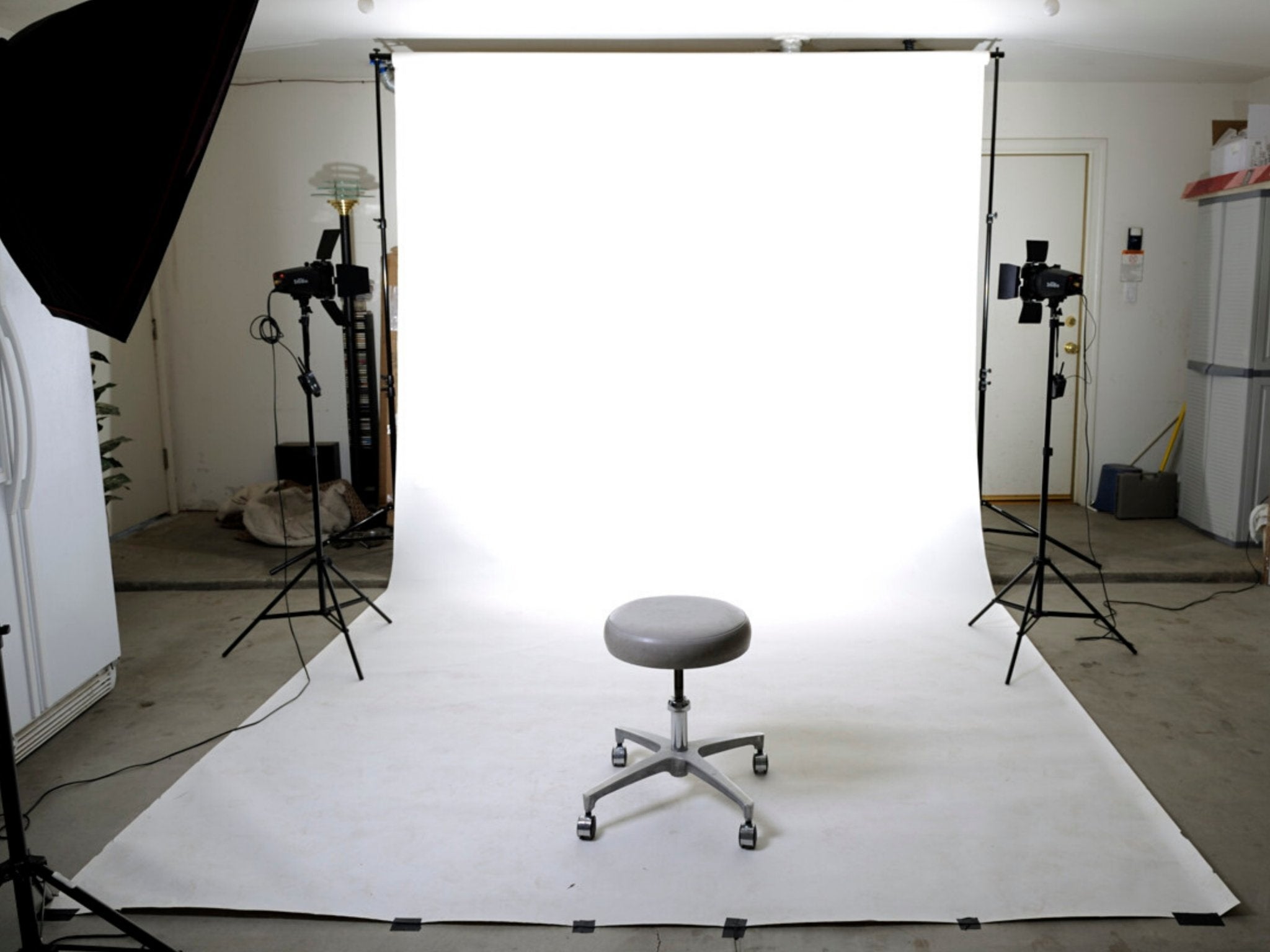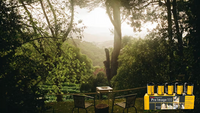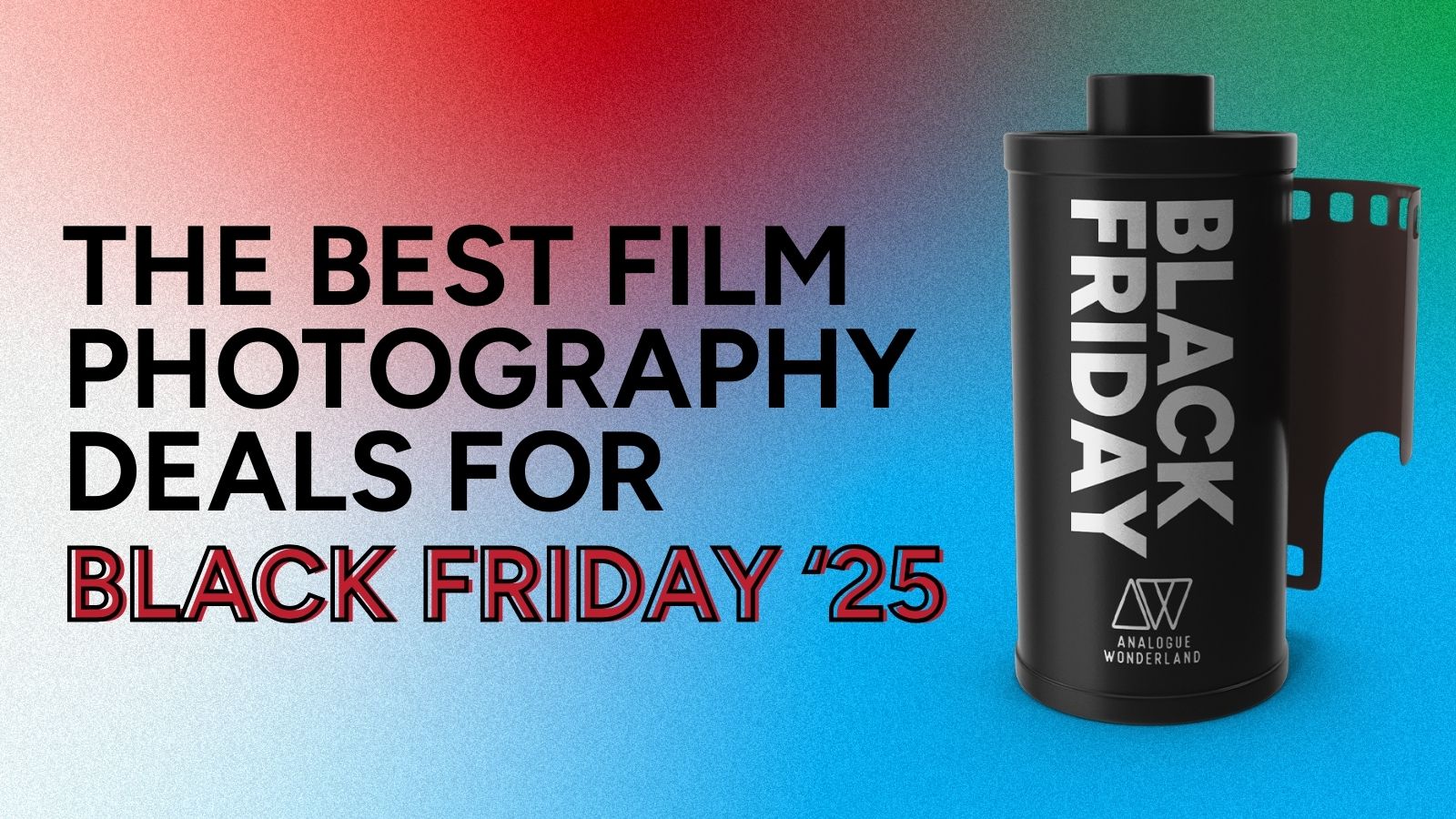Black Friday 2025 has landed at Analogue Wonderland, bringing some of our biggest film photography deals of the year - from discounted film and cameras to money-saving WonderLab processing offers, exclusive bundles, and festive specials available for a limited time only. Grab a great deal while stocks last!
Recent posts
Shop the article

The Best 35mm Film for Studio Photography
By Paul McKay
This article is one of our community-lead pieces that pulls together views, opinions, and sample photos from the wider analogue group to provide recommendations and education for fellow film photographers! You can read more from our 'Best Film...' series here, and contribute to the project by submitting a film review directly through the product page on-site.
What to Look for When Choosing a 35mm Film for Studio Photography?
The term “studio photography” actually covers several different genres; anything from portraits and fashion to still-life, product photography, food shots and plenty more besides. So precisely which 35mm film is best for studio photography will to some degree depend on the kind of studio photos you plan to shoot.
Naturally then, before choosing a film for your studio photography session, you’ll need to have some idea of the kind of images you want to produce in terms of content, style, and atmosphere. Let’s take a quick look at the four main points to consider: colour/B&W, sharpness/grain, subject and lighting.
Photo (c) Antiporda Productions LV, LLC
Colour vs Black and White
Before you can choose a 35mm film for you studio photography, the first decision you’ll need to make is whether you want to shoot in colour or black and white. There are numerous arguments both for and against each type of film relating to the technical flexibility or delivery. Ultimately though, choosing between colour and black and white is a highly personal decision linked to the end result you envision, and probably one you’ll have to work out on your own.
Either way, in this guide we review some great films for both B&W and colour enthusiasts. And if you’re undecided, you can always hedge your bets and shoot a bit of both.
Sharpness and Grain
Unlike, say, documentary or street photography, a studio session is rarely about producing gritty, impressionistic images. Instead fine-grain, sharpness, and faithful colour-rendition are more likely to be your main priorities (or tonal rendition, if you’ve gone for monochrome).
With that said though, in part this also comes down to personal preference. And there’s certainly nothing stopping you from shooting raw and grimy images in a studio if the concept calls for it. Ultimately then, sharpness, detail, and grain are not only technical considerations, but also creative ones, and so it will help to have a clear idea of the kind of aesthetic results you are aiming for before choosing which film to use.
Subject
Beyond artistic matters though, you should give some consideration to the subject you’ll be photographing, as this may also influence your choice of film.
As an example, a still-life session where you will be photographing many small and highly-detailed objects will likely require a totally different film to a fashion shoot based around the theme of, say, “movement” or “speed.” For still-life photography you’ll almost certainly be using a tripod, and so here a fine-grain and relatively slow ISO film will probably give the best results. But for a fast-paced and candid fashion shoot, a higher ISO such as 400 will likely be required in order to freeze the action - regardless of whether you’re using a tripod or shooting hand-held.
Lighting
Another factor that may influence your choice of film for studio photography is the type of lighting you’ll be working with. Again, this comes down to choosing an appropriate ISO.
If you’re aiming for a sharp, detailed, and fine-grained look, and will be shooting using high-powered studio flash, then there’s nothing to be gained by using a film that’s much faster than 100 ISO. But for those working exclusively with natural light, a 400 ISO film may be the safer option; helping to avoid unwanted blur or camera shake.
Even here though, it all depends on the kind of light you can expect to find in the studio. For example, 100 ISO might be absolutely fine if you’re in a part of the world that gets plenty of bright sunshine and you will be working in a well-lit daylight studio. For those in less temperate climes, however, or who will be shooting in a studio with small north-facing windows, an ISO of 400 or faster may be necessary. Especially if you plan to shoot at a relatively small aperture in order to achieve a deep depth of field.
Photo (c) Scott Cresswell
With these important considerations out of the way, let’s take a look at some of the best 35mm films for studio photography currently on the market, starting with colour films.
The Best Colour 35mm Film for Studio Photography
For those planning a shoot with a lot of movement, or looking to achieve a very deep depth of field while shooting handheld, Cinestill’s 800 ISO film is definitely one of the more logical choices. But with its quirky reaction to light, and distinctly cinematic look (it’s effectively movie stock cut into shorter lengths), this is also a great film for more experimental and atmospheric studio shoots.
Designed to produce natural-looking skin tones under tungsten lighting, 800T is a great film to get creative with when you’re looking for a truly cinematic vibe. If used with tungsten studio lights, colours are on the whole fairly neutral, yet always with a slight retro twist. However, the film will produce a strong blue cast when used in daylight without a filter. Meanwhile, when photographing reds, 800T almost gives off the deep, saturated look of mid-‘70s William Eggleston. As user E Wilson notes, “Red tones in particular look incredible.”
Unlike traditional motion picture films, Cinestill’s offerings lack a remjet layer. In practice this means that 800T creates an interesting halo effect when photographing bright light sources; thus adding to the film’s creative potential.
Although the red haloing means that this film won’t be suitable for all shoots, the effect can really add a special something to the right project. User Nico sums it up, saying that “the halos it creates around the lights is just captivating and the colours superb, regardless of the colour cast.” Horatiu Eduard agrees, noting that “the halos give a dreamy look to the final image and sometimes, a more realistic look. I always shoot this film against bright lights and I love it.”
Thomas Pearson hints at a possible creative use for the film, recommending that “if you're lucky enough to own or work around some nice old tungsten lights, this is definitely a film that you should consider.” Peter J also rates Cinestill 800T for studio sessions, saying that: “This film produces wonderful motion picture like images in bright artificial light.” And Antony Mo joins the chorus of users recommending 800T for the studio, adding that in particular “Cinestill 800 is a great film for getting cinematic shots.”
With its mysterious minimal packaging, and unusual name, Fujifilm Industrial 100 is certainly an intriguing product. But in actual fact, for those who’ve been using Fuji’s films for some time, Fuji Industrial might not be such an exotic emulsion after all. Indeed it is widely rumoured to be a rebranded version of the excellent, but now officially discontinued, Fuji Superia 100.
Whether this is actually the case isn’t something we’re in a position to comment on. But it definitely wouldn’t be a bad thing; although Superia was theoretically a consumer-level film, it certainly wasn’t short of fans among professionals either. And with its overall muted palette, yet nicely saturated reds, the theory that Fuji Industrial might be Superia in disguise seems entirely plausible.
Whatever it is inside that packet, though, it certainly produces some impressive results. But don’t just take our word for it, here’s what community member Raymond has to say: “Great all-round colour film, one of my favourites. I love the colour rendition - reds and greens really pop and the film is really sharp.” And as if this weren’t already convincing enough, he goes on to add that: “For the price, I think it is better than some of the better known alternatives, definitely one to add to your camera bag.”
Of course, a 100 ISO film will usually be best suited to a studio shoot when you know you’ll have access to plenty of light; either of the natural or artificial variety. All the same, Fuji Industrial isn’t to be underestimated in this department, and as Viraj Chauhan says; “it handled lower light better than I expected. really nice aesthetic to the photos overall.”
Community member AR specifically recommends Fuji Industrial for studio work, too, adding that the “film is amazing. The grain is very fine, the colours are crisp and well balanced and photographs look alive in a way the they don't with other fujifilm and kodak films I've tried.” Meanwhile another fully paid-up Fuji fan, Olivia Singleton, states that Industrial is her “favourite color film”, and enthuses about its performance when shooting in natural light, saying that it: “has amazing blue/green tones.”
Photographer JP shares Olivia’s enthusiasm, raving about the results when used on interiors, either with flash or using natural light. He also adds that “Being ISO 100 wasn’t sure I’d done the right thing but I was surprised and pleased. Colours are lovely, I don’t know how to describe them other than that they are why I started to reuse film.” Praise indeed.
For more examples of this film in action, check out community member T Hopper’s excellent review of Fujufilm Industrial 100 on YouTube.
Kodak Portra is one of the classics. Although primarily intended as a film for portraiture (the clue is in the name), it’s actually a supremely versatile film that is well suited to a variety of photographic styles. This fact is clearly reflected in the range of uses our community members make of the film; from portraiture to landscapes and everything in between.
As case in point, whether we’re talking about the 160 or 400 ISO version, Portra is also one of the most popular 35mm colour films we stock when it comes to studio photography. For example, community member Peter J specifically recommends Kodak Portra 400 for studio work, adding that it’s a “fabulous film that produces great results.” Indeed, he says that Portra is his overall favourite film, and that he especially rates it for the “exceptionally low grain” and “rich colours.”
And it’s these colours that are a big part of Portra’s charm; soft yet saturated, Portra produces an unmistakeable pastel blue-yellow cast that is like no other film stock. Slight over-exposure can give a really hazy, blissed-out look, while a little underexposure will provide deeper colors yet retain that attractive low-contrast quality that Portra is known for. As Portra user Omar says, “if you get that beautiful late evening light for portraits this film will blow you away.”
Likewise Stephen Crossman thinks that Portra is perfect for studio photography, and goes on to point out that “Portra 400 is very easy to work with scanning wise and just looks amazing.” His words are echoed by Michael Eldicott who says that Portra “is also quite forgiving. I would say you could go 3 stops under and 5 over and still get useful results. The film scans well and is easy to develop and print in the darkroom.” Michael also specifically recommends this film for studio use.
Whether it’s the fine-grained 160 ISO version, or the faster 400 speed Portra, community member Christopher Simpson sums things up for many Portra shooters when he says that the film displays “very minimal grain, fantastic colours. Performs really well has great dynamic range. Worth every penny.“ All in all then, this is a superb general purpose color 35mm film that performs exceptionally well whether used with studio flash or natural light.
Let’s not forget, though, exactly what this film was designed for, because there’s really no other film like Portra for shooting studio portraits. As Sergey V. Popov puts it “ if you want to hammer a nail, you go and buy a hammer. If you want to make some portraits, look no further.” Well said.
Photo (c) Zephyrance Lou
Best Black and White 35mm Film for Studio Photography
While Tri-X is many a photographer’s go-to film for recreating the gritty look of classic photojournalism, Ilford HP5 Plus offers slightly smoother grain and a rich tonality for a somewhat more refined look. This makes it the most obvious choice for when shooting fast action in the studio with natural light, yet without wishing to compromise on image quality.
Although HP5 hasn’t been around quite as long as Kodak’s Tri-X, it nonetheless has several decades of history behind it and is still going strong today. A fact that’s clearly reflected by the collection of overwhelmingly positive reviews this film has received from the Analogue Wonderland community.
For example, Chlo recommends HP5 as a stand-out solution for studio shoots, saying that “This film is amazing, the grain structure is great and the contrast is beautiful.” Meanwhile Thomas Pearson is in no doubt that HP5 is the business either: “Nothing compares to HP5. Push to 800 for the best results in my opinion.” And on the evidence of Thomas’s brilliantly executed HP5 studio portrait above, it’s hard to disagree.
Jim Graves also recommends HP5 for studio work. Particularly for any photographers who may still be a little unsure of their exposure technique: “Ilford HP5 is one of the workhorses of Film Photography. It produces even tones throughout the range and is kind enough to beginners to allow for a couple of stops either way if you get your exposures out by more than a tad.“ Beth Jaggard concurs, adding: I love the grain and contrast of this film, it copes really well with the different lighting conditions that I put it up against.
As we’ve seen, then, there’s no shortage of support for HP5 as a solid choice for black and white studio photography. And with a look that is smooth and contrasty, yet fast and forgiving, HP5 makes a great alternative to Tri-X.
Photo (c) Thomas Pearson shot on Ilford HP5
One advantage of working in the studio is that you generally have complete control over the lighting and other technical considerations. This means that it’s usually not a problem to shoot with a relatively slow ISO film for maximum sharpness. However, certain concepts simply call for a more aggressive and grainy look than can be provided by T-Max 100 without extensive pushing. And in this case a punchy 400 ISO film like Kodak Tri-X makes for an excellent alternative.
Tri-X is a true veteran film that remains virtually unchallenged today at this ISO. A big part of its allure is simply the gritty old-school charm. But when treated right, Tri-X is also capable of delivering some very polished and sophisticated looking images.
Community member Roger S has used Tri-X in the studio to great effect, shooting a beautiful still-life: “Thunderous blacks against the lightening whites with silky smooth gradations of the mid tones,” he says of his experiences working with the film. Ian Simpson also recommends Tri-X for shooting in the studio, adding that: “It can be used in so many different lighting conditions and records every tiny level of detail.”
Steve L is equally approving, highly rating the film for its “unique look, beautiful deep contrast and fine detail/grain”. Steve goes on to offer the advice that he always pushes Tri-X by a stop ”to bring out the contrast a little further and try to capture that classic photojournalist look.” Antony Mo goes even further, saying it can be pushed up to three stops before the grain becomes overwhelming.
In short, if you’re looking for a little more of an aggressive and atmospheric look, or need to capture fast action, Tri-X is likely your best bet within the monochrome realm.
Photo (c) Roger S shot on Kodak Tri-X
When it comes to choosing a great all-round black and white film for studio photography, it’s really got to be Kodak’s T-Max 100. An excellent medium-fast speed fine-grain film, T-Max 100 is optimized for scanning but produces equally fantastic results in an analogue darkroom.
Push it a stop or two for greater contrast or to produce blur-free handheld images even in less-than-perfect lighting conditions.
T-Max user Stephane recommends the film for studio work, and offers a great example of precisely what this film is capable of with a couple of fantastic portraits. “I shot with it using natural light and studio lights and it didn't disappoint with both type of lighting, ” says Stephane. Adding that “I will definitely use TMax 100 again for portrait work in the studio.”
Meanwhile, another community member, Sroyon, just loves the film all-round, saying that “T-Max is one of my favourite black and white films. Smooth tones, fine grain, micro-contrast, relatively forgiving of exposure errors.“ User Filmgrainoptics also recommends T-Max 100 for the studio, adding that “I love the tone and the subtle grain on the images.” Not only this, but T-Max “scans very nicely too,” says Jamie. Good to know!
Photo (c) Farand Chen
Final Thoughts
Every photographer has their own individual style and tastes. Meanwhile studio photography actually encompasses quite a wide range of photographic genres. The result being that it’s impossible to recommend a single overall best 35mm film for studio photography.
Rest assured, though, that all the 35mm films recommended by our community members above make great solutions for serious studio work. Now it’s just up to you to decide which route you want to take. Happy shooting!
Photo (c) Jay DeFehr
Huge thanks to the wonderful contributors who wrote reviews and submitted photos for the greater knowledge of the community! If any contributor would prefer us to send a credit link direct to their Instagram/Facebook/website instead of the review then please let me know by dropping a quick line to paul@analoguewonderland.co.uk
Don't forget to check out the other 'Best Film' articles here!
Ready to dive in?
Keep Reading
View all
Christmas 2025: Shipping & Opening Hours
Christmas 2025 is fast approaching! To make sure your analogue goodies arrive in time, take note of our last shipping dates, plus opening and operating hours over the festive season. We've got everything you need to gift the magic of film photography this Christmas!

Film Photography Christmas Gift Guide 2025: Analogue Wonderland
Capture the magic of Christmas with film - no filters needed. Our 2025 Film Photography Christmas Gift Guide 2025 is packed with thoughtful presents for every type of shooter, from curious beginners to seasoned photographers. Discover film stocks, cameras, and creative accessories that will make this festive season truly memorable.
Subscribe to our newsletter 💌
Sign up for our newsletter to stay up to date on film photography news, sales and events:
Free Tracked Shipping
On all UK orders over £50
Passion For Film
An unbeatable range and an on-site lab
Our Customers Trust Us
Thousands of independent 5* reviews
All Deliveries are Carbon Neutral
Independently audited and verified by Planet
- Opens in a new window.






1 Comment -
Mr Joy •
Greetings!
Hope all is well!
We would like to introduce you to our photo editing company service. We’ve given the best results to our clients all over the world to present and upgrade their marketing photo products for commercial websites and online businesses and stores catalog.
Please let me know if you may need any of the following services:
Clipping path
Background remove
Masking
Layer masking
Shadow
Retouching
headshots retouch
Ghost mannequin
Restoration
Re-color
Color correction
Real Estate Photo Editing
Pattern Replace
E-Commerce Editing
Wedding photo lighting
Here are the details of my work (three PDF).
https://drive.google.com/drive/folders/1kBB2zbUikX1NKj5eO5jDzu5OhMgZK7cL?usp=sharing
You can see our portfolio on our website
https://gbdclippingpath.com/
photopixelqa@gmail.com
If you haven’t worked with us before, we can do a test image retouching for you. so you could see our quality of work.
If you already work with another company or retoucher, we would be happy to get an opportunity to compete and to offer you better terms, meeting your highest standards and requirements.
Hope to hear from you!
CCO, Photopixelqaphotopixelqagmail.com
Call Us, WhatApps:) +8801872943218
Thank you
Mr Joy